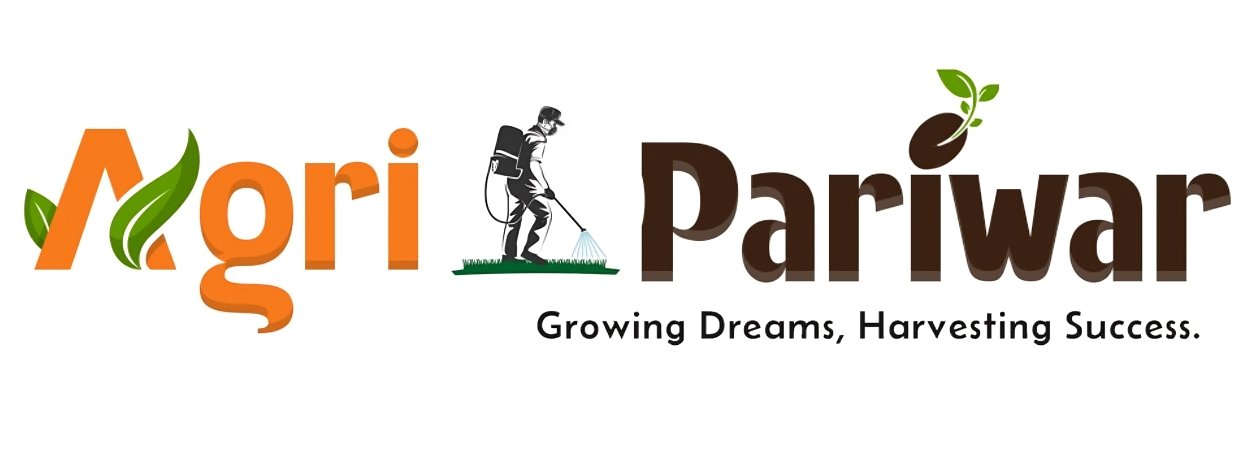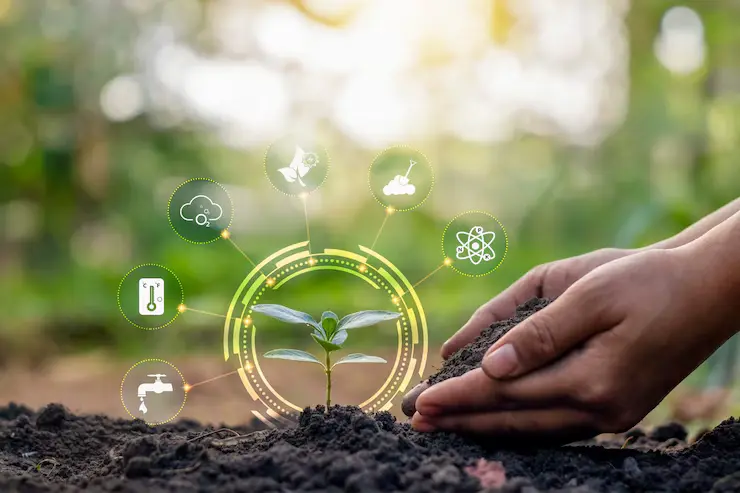Subtotal ₹0.00
As the world faces the challenges of population growth, climate change, and dwindling natural resources, sustainable farming practices have never been more important. The key to addressing these challenges lies in growing more food while using fewer resources. Sustainable farming focuses on methods that meet present agricultural needs without compromising the ability of future generations to meet their needs.
In this blog, we’ll explore how farmers can grow more with less by embracing sustainable farming techniques that enhance productivity, preserve natural resources, and promote environmental health.
1. Water Conservation: Irrigation Systems That Maximize Efficiency
Water is one of the most precious resources for farming, but it is also one of the most misused. Over-irrigation can lead to water wastage, soil erosion, and the depletion of valuable water sources.
Efficient Irrigation Systems such as drip irrigation, which delivers water directly to the plant’s roots, help conserve water while ensuring crops receive the right amount of moisture. Rainwater harvesting is another method that can help reduce reliance on groundwater or external water sources, especially in regions prone to drought.
2. Soil Health: The Foundation of Sustainable Farming
Healthy soil is crucial to sustainable farming, as it supports plant growth, regulates water flow, and contributes to carbon storage. Maintaining soil health is essential for growing more with fewer resources.
Composting and cover cropping are two powerful tools in soil management. Composting returns organic matter to the soil, enriching it with nutrients and improving its structure. Cover cropping involves planting crops like legumes or grasses between regular planting seasons to prevent soil erosion, improve nitrogen content, and enhance soil moisture retention.
Additionally, reducing the use of chemical fertilizers and pesticides can help maintain a balanced ecosystem in the soil. Organic farming techniques focus on using natural fertilizers such as manure, compost, and bio-based fertilizers to keep the soil healthy and productive.
3. Crop Rotation: Enhancing Biodiversity and Reducing Pest Pressure
Crop rotation is a simple yet effective technique that involves alternating the types of crops grown in a particular field each season. This practice prevents soil depletion and helps manage pests and diseases.
By planting a variety of crops in rotation, farmers can reduce the buildup of pests and diseases specific to a single crop. It also helps balance nutrient requirements, as different crops have varying needs and will naturally replenish the soil in different ways. For example, legumes can fix nitrogen in the soil, improving its fertility for future crops.
4. Integrated Pest Management (IPM): Reducing Chemical Use
Integrated Pest Management (IPM) is an environmentally friendly approach to controlling pests using a combination of biological, physical, and chemical methods.
IPM promotes the use of beneficial insects, such as ladybugs, to control harmful pests, reducing the need for chemical pesticides. Natural pesticides, crop rotation, and the introduction of pest-repellent plants are also part of the strategy. By reducing reliance on harmful chemicals, IPM ensures that pests are controlled in a way that minimizes harm to the environment and surrounding wildlife.
5. Agroforestry: Combining Trees and Crops for Sustainable Yields
Agroforestry is the practice of integrating trees and shrubs into crop farming. This technique provides numerous benefits, including increased biodiversity, reduced soil erosion, and enhanced water retention. The shade provided by trees can help prevent soil drying, while their roots stabilize the soil and prevent erosion.
Additionally, trees can offer additional income sources through fruit, timber, or medicinal products. The overall effect is a more resilient and diverse farming system that provides sustainable yields over time.
6. Precision Agriculture: Using Technology to Optimize Resources
Precision agriculture involves using advanced technologies, such as GPS, sensors, and drones, to monitor and manage agricultural practices more efficiently. With precision tools, farmers can monitor soil health, moisture levels, and crop conditions in real-time, ensuring they use only the necessary resources to optimize yields.
For instance, variable rate technology can apply fertilizers and water only where needed, minimizing waste and reducing the environmental impact. These technologies allow farmers to make informed decisions, reduce input costs, and increase crop production with fewer resources.
7. Local and Seasonal Farming: Reducing Carbon Footprint
Farming seasonally and locally is another sustainable practice that helps reduce the environmental impact. By growing crops that are suited to the local climate and selling them locally, farmers can reduce the carbon footprint associated with transportation and storage.
Supporting seasonal farming also encourages consumers to buy fresh, locally grown produce, which not only reduces energy consumption but also supports the local economy.
Conclusion: Growing More with Less
Sustainable farming is not just a buzzword — it’s a way of life that allows us to produce more food while conserving the planet’s resources for future generations. By focusing on water conservation, soil health, crop rotation, integrated pest management, agroforestry, precision agriculture, and local farming, farmers can achieve better yields and environmental sustainability.
As consumers, we can also play a role in supporting sustainable farming by buying locally, reducing food waste, and advocating for policies that promote sustainable agricultural practices. Together, we can create a future where farming thrives without depleting the earth’s resources.


